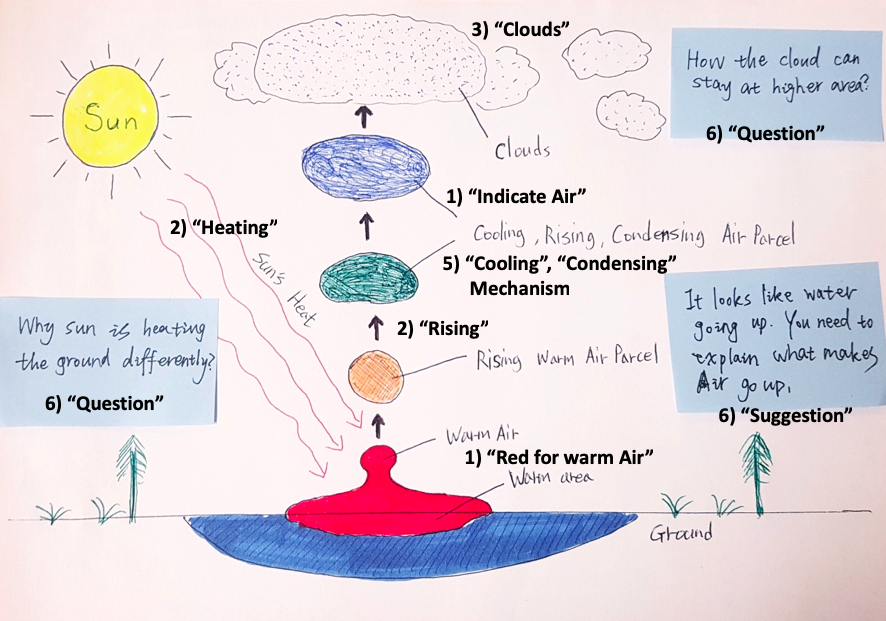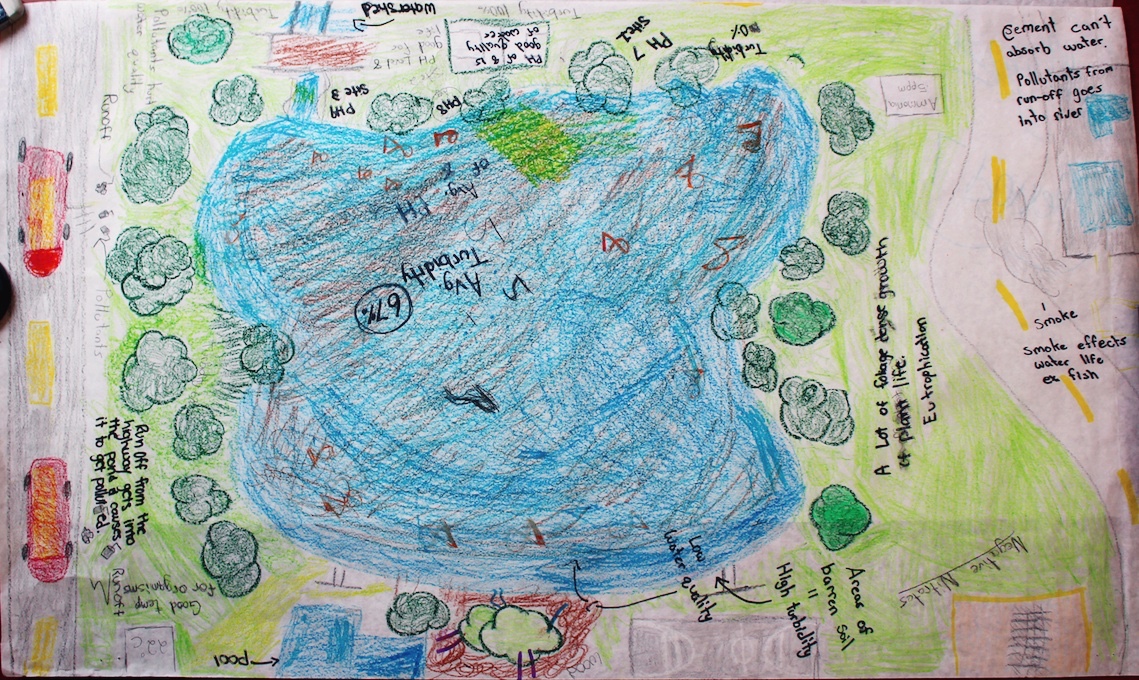Commentary
Using Models to Teach Science
The Science Teacher—November/December 2019 (Volume 87, Issue 4)
By Byung-Yeol Park, Laura Rodriguez, and Todd Campbell
The Next Generation Science Standards (NGSS) focus on students’ application of sense-making and problem-solving skills to deepen their understanding about naturally occurring phenomena (NGSS Lead States 2013). The NGSS identifies three dimensions: disciplinary core ideas (DCIs), science and engineering practices (SEPs), and crosscutting concepts (CCCs) for teachers to consider as they design challenging and worthwhile instruction.
The role of SEPs as stated in the Framework for K–12 Science Education is to “help students understand how scientific knowledge develops, … and gives them an appreciation of the wide range of approaches that are used to investigate, model, and explain the world” (NRC 2012). Among the SEPs, Developing and Using Models offers students a sense-making tool to reason about how real-world events or system works. As students engage with peers in developing models, they can move from using models to unpack their initial ideas to explain phenomena, to using evidence from observations, readings, and experiments to revise or refine their models. Through these processes, students can visualize and understand complex systems as scientists do when they explore the natural world.
Cultivating students’ scientific knowledge and developing their capability in scientific inquiry depends on a teacher’s ability to use existing resources to design rich learning opportunities (Brown and Edelson 2003). Designing such experiences is not easy, and it is particularly challenging for new teachers who have little experience making decisions about the best way to develop specific knowledge and practices, especially in relation to choosing appropriate resources for engaging students in activity (Kaufmann et al. 2002). In addition, a limited amount of guidance to support teachers in the practical aspects of combining the three dimensions currently exists (i.e. DCIs, SEPs, and CCCs) in K–12 science instruction (McFadden and Roehrig 2017).
More resources and preparation are needed to support teachers in using the three dimensions effectively in teaching science (Krajcik 2015). A special issue of The Science Teacher in September 2013 focused on the theme “Developing and Using Models,” and other supportive guides have also been released. However, engaging students in developing and using models in science classrooms is still difficult given how modeling has only recently been emphasized in science classrooms as an important practice for knowledge development (Campbell and Oh 2015).
Given this, the following four questions can be used to guide our use of models in teaching science:
- What is the purpose of a model?
- How can we develop a model?
- How can we use models in teaching science?
- What should we consider when teaching with models?
Each of these is considered along with relevant examples from high school students’ modeling activities.
What is the purpose of a model?
The purpose of a scientific model is for “describing, explaining, and predicting natural phenomena and communicating scientific ideas to others” (Oh and Oh 2011). As an example, a model of how the formation of clouds may involve the condensation of water vapor with a connection to air movement and temperature is shown in Figure 1.

Example model for the formation of a cloud.
To explain how clouds are made in this model, students use different colors and circle sizes to show changes as clouds form. Arrows indicate the process of changing air conditions. Words such as “Sun’s Heat,” “Cooling,” “Rising,” and “Condensing” help the reader understand scientific mechanisms that can be difficult to explain with just figures or lines. Generally, models involving scientific processes and mechanisms tend to have many causal relations with directions labeled in between the objects.
We can use this kind of model to help students understand scientific processes and mechanisms in natural phenomena. Moreover, we can use a model to help students predict what kind of cloud would be around their location at any given time. For this, creating new models including more specific information about their environment and air conditions can be useful in making predictions.
How can we develop a model?
While many things can be described as a model, from representations to objects, developing and using models as an SEP in the NGSS focuses on how models serve as tools for reasoning. More specifically, developing and using models aligned to the NGSS is most concerned with “the process by which scientists [and students] represent ideas about the natural world to each other, and then collaboratively make changes to these representations over time in response to new evidence and understandings” (Ambitious Science Teaching 2015). Given this, to use models in learning science, teachers need to provide students with opportunities to understand what a model is, how to develop a model, and the role of symbols and other features of models can play in supporting their reasoning.
Scientists develop models based on information they collect both from their initial ideas or things they have learned previously, investigations, and in connection to ideas they gather from background research of the literature (Passmore and Svoboda 2012). In some cases, they revise models developed by others to adapt to new information or new problems. The explanatory power of a model depends on how the author decides to condense and represent information.
Consider a model that was created to explain the interaction between a watershed and its environment containing many symbols (e.g., tree, grass, water, fish, building, car, and load) with different colors, and lines, arrows, words, short sentences, and numbers showing the relationship between the components (see Figure 2). For example, the figure of smoke and short expression of “Smoke affects water life. ex. Fish” helps indicate the impact of human activity on aquatic animals. The expression of “Cement can’t absorb water. Pollutants from run-off goes into river” explains how pollutants impact water quality and why it happens. Numbers, like “Avg. Turbidity 67%,” and “pH 7” represent the important conditions of objects within the model (i.e., water). Lines and arrows explain the connections between the objects in the model. In the end, it can be seen that there are many ways in which students can draw on a range of tools in their attempts to explain what they observed with models.

Example model watershed and environment.
Learning to make decisions about how to use these tools in one’s model is challenging for students, especially those who may never have made a model. First, a class or a small group of students need to agree on what arrows mean, and on their shape and directionality. Then one must consider the range of symbols one can use. For example, in Figure 1, students use different colors to represent air temperature. Consider some of the following representational options that can be used in models:
- Lines can be used to suggest connections. Different colors or thickness are helpful to show emphasis, and modified lines; such as, dotted or curved lines; can be useful to differentiate types of connections.
- Arrows can be used to indicate a causal relationship and give direction (one-way arrows are good to indicate cause and effect, and both ways or more than two-way arrows can illustrate more complex relationships).
- Symbols and figures can be used to show concepts (simple symbols or figures can afford more explanatory power).
- Numbers can be used to indicate quantity or level.
- Words and sentences can be used to describe mechanisms and explain processes. Clear sentences for the mechanisms or processes can help readers interpret the model.
- Sticky-notes can also be used to suggest and negotiate more scientific ideas. Notes from others are good for upgrading models.
How can we use models in teaching science?
Modeling does not end after developing the first model; constructed models should be tested, evaluated, and revised. Through this process, students will be able to learn how to use evidence in order to support their ideas with other sense-making practices (e.g., planning and carrying out investigations). Campbell, Gray, and Fazio (Forthcoming), in their work focused on Model-Based Inquiry (MBI), draw on principles from Ambitious Science Teaching (Windschitl, Thompson, and Braaten 2018), to suggest four stages that we can follow as we use modeling in teaching.
The first stage is planning for engagement with important science ideas. Teachers unpack standards to identify learning targets, an anchoring phenomenon, and a driving question that orients students to some interesting aspect of the anchoring phenomenon. We also construct final target models and explanations that teachers can use as guides for planning and supporting students across a unit. Target models and explanations are not shared with students; instead, they are behind-the-scenes planning tools and maps for helping the teacher think about productive ways students might engage in modeling an anchoring phenomenon.
The second stage is eliciting student ideas. Teachers introduce the anchoring phenomenon and driving question to the students at the beginning of this stage. Students develop initial hypotheses and initial models based on observations and shared ideas.
The third stage is supporting ongoing changes in thinking. Students, in this stage, will have opportunities to reconstruct, test, evaluate, and revise their initial models based on the results of scientific inquiry (e.g., observations, experiments, or discussions) and engagement with many other science practices (e.g., Engaging in Argument From Evidence). One method to keep track of changes in thinking as students engage in investigations is the use of a summary table, an ongoing record the whole class adds to after engaging in investigations. It can detail patterns recognized, explanations for these patterns, and how these explanations can help the class think about explaining the anchoring phenomenon.
Finally, the fourth stage is pressing for evidence-based explanations. In this last stage, students finalize their models by considering all they have learned across the unit through engaging in investigations, activities, opportunities to read relevant texts, and working collectively as a class to build general agreement about their models.
What should we consider when teaching with models?
Many teachers say that the most challenging part of teaching with models is assessment. There are numerous ways one might consider assessing instruction where using and revising models is central. One strategy is to ask students to draw from their groups’ final model, using the summary table, to develop individual evidence-based explanations. In this way, students can work with peers throughout the unit to engage in SEPs in developing and refining models, before they are asked to develop individual evidence-based explanations.
In the evidence-based explanation, students are asked to include the story of what happened when considering the driving question, important science ideas (i.e., DCIs & CCCs) necessary to explain mechanistically what happened, and evidence of how we know what we know about each important science idea that relates to the story. In the end, this evidence-based explanation can be assessed with a rubric similar to the one created and shared from the Model-Based Inquiry website (See “On the web”).
Conclusion
Some teachers report that it is difficult to align their instruction with the NGSS, even though they have extensive teaching experience in high school. As we begin to explore how to integrate developing and using models in our instruction, the four questions posed here might provide helpful stepping stones for building effective science lessons. Additionally, the resources listed under “On the web” will give more insight into important considerations related to using models in the science classroom.
Byung-Yeol Park (byung-yeol.park@uconn.edu) is a PhD candidate in the Department of Curriculum and Instruction at the University of Connecticut. Laura Rodriguez is an assistant professor of science education at Eastern Connecticut State University, Willimantic, Connecticut. Todd Campbell is a professor of science education at the University of Connecticut, Storrs, Connecticut.
Environmental Science NGSS Teaching Strategies High School


